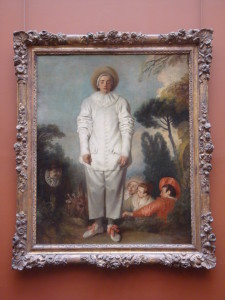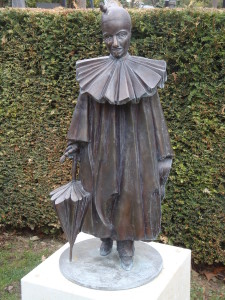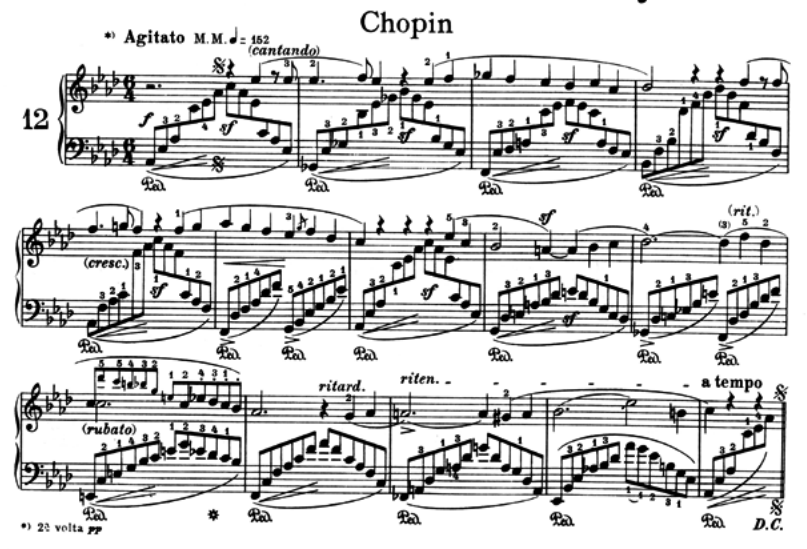I’m Listening to Everything Composed by Robert Schumann
July 1, 2013TITLE: Carnaval, Op. 9
DESCRIPTION OF THE PIECE: Carnaval is a set, or collection, of character pieces. A character piece is a relatively short piece of music for solo piano. Character pieces are meant to express a fleeting glimpse of an emotion or character. Robert Schumann grouped them together because each piece was intended to represent a person at a masked ball. There are twenty-four pieces in this set, which sounds somewhat overwhelming to listen to, but again, they are character pieces which are generally quite short. The longest piece in this set is the final piece (about 3 ½ minutes) and the thirteenth is the shortest (slightly under 30 seconds). I’ll include the length of each piece next to its title so you can see how short these pieces really are. The entire work takes less than half an hour.
Here is a basic description of each piece in the set. This may help you know what to listen for:
1. Préambule (this introduction to the set is about two minutes long) – I mentioned “ear bugs” in my post two weeks ago. Well, here’s another one. As I said a few weeks ago, I’m sure it’s entirely coincidental, but that’s how my brain works—I hear a tiny fragment of one tune and it sounds like a similar fragment from another. Don’t you think the first phrase in this piece sounds like a grand bombastic version of the first phrase in the LDS hymn “Sweet is the Work, My God, My King”? Here’s a clip of the opening phrase of Préambule, then the opening phrase of “Sweet is the Work” and then both repeated:
Schumann Preambule from Carnaval – Sweet is the Work
2. Pierrot (about 2 minutes long) – A bunch of the pieces in this set are representative of stock theatrical characters from the “Commedia dell’Arte” tradition. Pierrot is a sad clown, deeply in love with Columbine, but she runs off with Arlequin instead. Here are two photos of Pierrot, one a painting in the Louvre, the other on a gravestone that I came across in the Zentral Friedhof (main cemetery) in Vienna:
3. Arlequin (just under one minute long) – another character from the Commedia dell’arte, known for his physical agility. In the theatrical tradition, the character of Arlequin would never do a simple action, but would add a cartwheel or somersault or leap. You can definitely hear that in this piece.
4. Valse noble (about a minute long) – a simple waltz
5. Eusebius (just under two minutes) – this piece depicts Schumann himself. Well, at least one part of his personality. Schumann wrote articles for a music magazine he co-founded (the Neue Zeitschrift für Musik) and some of these articles were written in a conversational style between two characters – Eusebius and Florestan. In actuality, these two characters were manifestations of Schumann’s own psyche; Eusebius his calm and peaceful side; Florestan his fiery passionate side. In this piece you can hear what I consider one of the fingerprints of Schumann’s compositional style; I call it “cluttered in a good way.” Whenever I turn on the classical music radio station and hear a piano piece that sounds “cluttered in a good way,” I generally assume it is Schumann. The clutter you’ll hear in “Eusebius” is simply that the right hand has seven-tuplets or quintuplets against the left hand’s duple or quadruple patterns—in other words, cluttered! Listen to “Eusebius” and see if you agree.
6. Florestan (about a minute long) – and here’s the fiery passionate side of Schumann’s personality.
7. Coquette (just over a minute) – depicts a flirtatious girl.
8. Réplique (under a minute) – a response to the flirtatious “Coquette”
9. Papillons (about 30 seconds long!) – depicts butterflies. I know that description may not be entirely tantalizing, but it’s only 30 seconds long! Listen to it. I’m quite positive you’ll be able to see butterflies (although they seem a tad violent in my opinion).
10. A.S.C.H. – S.C.H.A: Lettres Dansantes (about 30 seconds) – these letters represent a musical puzzle Schumann played with throughout Carnaval. A. S. C. H. translates to the musical notes A, E-flat, C, and B and S. C. H. A. translates as E-flat, C, B, A. I’ve never bothered to try to literally hear that pattern—but it’s an “Oh, how interesting” type of thing.
11. Chiarina (just under a minute) – a depiction of Clara Wieck. At the time Schumann wrote this piece, he and Clara were just friends (she was the 14-year-old daughter of
his piano teacher), but later, she and Schumann fell in love, were married and had eight children together. It makes you wonder what sort of relationship she and Schumann had at that point—how he viewed her. It also makes you wonder how she responded to hearing his impression of her through music. I suspect she enjoyed the attention he was paying her—after all, she was a young teenager, and he was the 23-year-old student of her father that she had known since she was nine years old.
12. Chopin (about a minute) – a depiction of fellow composer Frédéric Chopin. I find this one absolutely hilarious because it really sounds like the music of Chopin—flowery, dreamy, sentimental—I love it! In fact, it even LOOKS like music written by Chopin—take a look:
13. Estrella (30 seconds) – a depiction of Robert’s current girlfriend, Ernestine von Fricken. Like “Chiarina” this one also makes one wonder what their relationship was like at the time because it’s quite fiery, too.
14. Reconnaissance (under a minute and a half) – depicting a meeting of Robert and his girlfriend at a social gathering.
15. Pantalon et Colombine (under a minute) – Pantalon and Columbine are characters from the Commedia dell’arte. Pantalon represents money and ego; Columbine represents a servant with little money but great wisdom, constantly fending off the unwanted advances of Pantalon.
16. Valse allemande and Intermezzo: Paganini (the first part of the Valse is just over 30 seconds, then the Paganini section is also over 30 seconds and then there is a recap of the Valse again—Total time: about two minutes.) The Paganini section is a depiction of the famous and virtuosic violinist Niccolò Paganini, so it makes sense that that section is quite virtuosic and rambunctious.
17. Aveu (about a minute) – depicts a declaration of love.
18. Promenade (about two minutes)
19. Pause (15 seconds!) – a very fast and brief passage from the opening Préambule which leads directly into the final piece…
20. Marche des “Davidsbündler” contre les Philistins (3 ½ minutes) – this translates as the March of King David against the Philistines, but Schumann may have been using this symbolically. He co-founded the music journal (mentioned above) to champion new compositions and attack what he considered the “inartistic” music of the past. It is no mistake that the word “philistine” is now used to refer to an uneducated person who does not appreciate the finer things in life (such as fine art, fine music, etc.). This piece also briefly references a number of the earlier pieces in this set.
HIGHLIGHT: For me, it is hard to top “Chiarina” in charm and entertainment value. Listen to it again and notice how fiery it sounds. And again, I just love imagining how thrilled 14-year-old Clara would have been to be included as a subject in this set of pieces.


